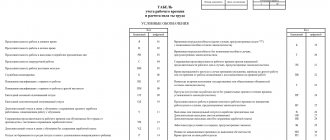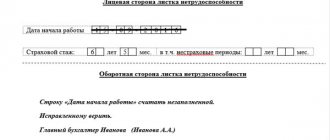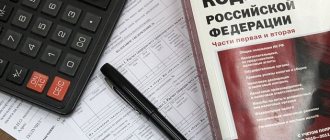What is working time tracking?
Timing is a method of analyzing working time, which records the duration of repeating cyclic labor processes.
Most often it is used for technological operations performed manually, using tools, devices, or carried out with partial mechanization. In this case, the work operation is divided into elements or work methods. The main tasks that are solved in the process of conducting timing studies:
- detection of irrational and unnecessary labor practices;
- designing the most efficient work processes;
- determination of production standards.
The final result should be the approval of working time standards for a technological operation.
What does timekeeping include?
Like other methods of studying working time, timing is carried out in several successive stages. To conduct timing studies it is necessary:
- study the procedure for carrying out the operation being examined, the workplaces where it is carried out;
- select employees who will be monitored;
- prepare a data collection form;
- take measurements;
- Analyze the results and make adjustments if necessary.
Often, before the timing begins, a photograph of the working day is taken. This helps determine the list of technological operations performed by site employees, their sequence and level of repeatability.
ConsultantPlus experts talked about how to photograph a working day. Get trial access to the system for free and proceed to recommendations.
After the work process has been designed and its components have been determined, the employees who will be monitored are selected. At the same time, if the purpose of the analysis is to identify working time reserves, the most experienced employees are selected. If the primary task is the development of standards, then workers with an average rate of work are used as observables. Newbies or low-performing personnel are not hired for timekeeping.
Goals and functions
The main purpose for which such certification is carried out is to determine the performance of an employee or department . Moreover, correctly carried out timing allows you to optimize production and the number of personnel for a certain position.
If it turns out that people are spending too much time on a particular process, causing productivity to suffer, new positions must be opened. On the other hand, if it is discovered that some employees are wasting too much time, staff may be reduced or optimized.
Monitoring the efficiency of work at an enterprise is one of the main functions of time management, including such a tool as timekeeping. Therefore, this method is widely used in enterprises with a large staff of employees .
You can read more about staffing in this article.
How timing data is collected
It is advisable to carry out timing measurements on jobs that require regular performance of the same operations, which can be divided into individual elements.
Example:
The operation of bending one workpiece on a machine can be divided into the following elements:
- Reach your hand towards the workpiece container.
- Take the workpiece.
- Move the workpiece to the machine.
- Secure the workpiece.
- Reach out to the button and press it.
- Take the finished product.
- Transfer the finished product to a container.
In this case, during timing, the duration of each operation is sequentially measured. Several measurements are taken, the results are summed up, and the average duration of the entire operation is displayed. To determine the required number of measurements depending on the nature of the work and the total duration of the process, it is advisable to use the table:
| Nature of work | Number of measurements depending on the duration of the operation, min | |||
| Up to 1 | 1-5 | 6-10 | Over10 | |
| Work on automated machines and equipment | 10-20 | 10-20 | 6 | 4 |
| Working on machines and equipment using manual labor | 15-30 | 15-30 | 10 | 6 |
| Manual | 30 | 20-30 | 12 | 8 |
For operations with a total duration of up to 6-8 seconds, the so-called cycle timing is used. When it is carried out, successive combinations of elements of the labor process are measured. Based on the data obtained, the duration of each labor movement is arithmetically calculated.
When developing a form for time-keeping observation, a table is formed, on the left side of which the names of the elements of the labor process are indicated. Next, columns are created in it for measurements of each movement in accordance with the selected number of observations. On the right side of the table, the results of measurements are summed up and the stability coefficient of the chronosequence is calculated. With its help, the correctness of the measurements taken is checked.
To calculate the stability coefficient of the chronosequence, the formula is used:
Where:
MAXz — maximum element measurement value;
MINz—minimum measurement value.
The standard value must be compared with the data given in the table:
| Type of production | Chronological sequence stability coefficient for operation duration over 15s | ||
| Machine work | Machine-hand work | Handmade | |
| Large-scale | 1,1 | 1,5 | 2 |
| Serial | 1,1 | 1,3 | 1,7 |
| Small-scale | 1,1 | 1,7 | 2,3 |
If the coefficient exceeds the specified value, it means that the measurement was performed incorrectly. In this case, either a repeated observation is carried out, or a number of measurements are cleared of values that deviate from the average value by more than 10-15%.
Timing observation form:
How timekeeping is interpreted
Analysis of timing data is carried out through:
- visualization of employee action statistics;
- constructing equations for the dependence of the quantity of products produced on various factors;
- comparing the actual productivity of employees with the planned, reference;
- identifying irrational actions of an employee during operations;
Often all of these methods of interpreting timing data are performed simultaneously by the employee or a competent colleague. The end result should be the emergence of standard working hours for a specific operation.
Based on the data obtained during the timing, as well as their analysis, the enterprise makes personnel decisions, publishes methodological recommendations for optimizing the sequence of labor movements, the location of tools, equipment and equipment, changing the number of workers at the site, and optimizing the production process as a whole.
Example:
Based on the results of the timing of the operation for the production of a bent profile, it was established that the production of one unit of a product 1 meter long takes 39 seconds. Thus, we can calculate how long it will take one worker to produce a batch of 1000 units: 1000 × 39 = 39,000 s, which will be 10.83 hours of working time.
Having plans for production for the period, you can then calculate not only the required number of workers of a certain qualification, but also effectively plan other aspects of the activity. For example, knowing the time during which materials released into production will turn into finished products, you can plan the logistics of purchasing materials and their optimal supply.
Our experts have prepared a sample working time clock, including measurements of the duration of an employee’s labor movements:
Timing example:
Balance accounting
Based on the data obtained, the analysis and determination of the main coefficients showing the efficiency of using working time funds is carried out:
- Calendar time utilization rate –
Kkvf = Total number of hours worked/calendar time fund
Ktvf = Total amount of time worked/time fund
Kmvf = Total number of hours worked/maximum possible fund
The calculation of the fund in formulas is carried out in person-days.
In the process of planning tasks, it is imperative to take into account two factors that are directly related to working time.
Actual availability
We are talking about the sum of three indicators when calculating the working time fund.
Tf = Tk + Tt + Tmax,
where Tk is calendar time; Тт – time-off time; Tmax is the maximum allowable time.
When calculating the third indicator, it is necessary to take into account possible absenteeism of employees and the time of permissible absence (for example, the absence of an employee due to temporary disability carried over to the next calendar period).
Efficiency of use
In 2020, it is permissible to use three methods for creating time regulations:
This method involves a full accounting of all available indicators of working time. For editing, we use the search and elimination of sources that reduce the overall efficiency of employees. Using the factual method, enterprise management can obtain complete and objective information about the prospects for increasing employee productivity.
The method is used when calculating the planned average output at a specific workplace. Records are kept for each employee separately.
The method is used if there are standards for all stages of the working day with the possibility of timing: preparation for starting work, completing tasks, lunch break, recording results.
Correctly carried out timing allows management to:
- determine the efficiency of the load map and reduce equipment downtime;
- calculate the impact and share of useful actions of each employee at a specific workplace;
- obtain data on the dynamics of operations at all stages of the production process;
- evaluate the effectiveness of business decisions regarding individual projects.
Results
Working time tracking is a tool that can be used to optimize a company’s business processes.
Correctly carried out timekeeping provides information that helps to effectively manage not only working time, but also other processes, for example, logistics. In practice, timekeeping is combined with other methods of studying working time, in particular working time photography. You can find more complete information on the topic in ConsultantPlus. Full and free access to the system for 2 days.
Processing the results
During observation, the human factor plays a role in obtaining data and defective measurements cannot be excluded, which should be noted during timing. When processing the results, they must be removed.
After removing defective measurements from the record sheet, the duration of each component of the operation is calculated and time series are formed. If you look at the timing of working hours (a sample is given below), you can see that the time sequence is the time for each element of the operation and observation. For example, when an injection is performed by a nurse, the chronological sequence is presented in numbers in Table No. 2.
Table No. 2
| № | Item name | Fixing points | Observation/duration, sec | ||||
| 1 | 2 | 3 | 4 | 5 | |||
| 1 | Removing the syringe from the package, connecting the body to the needle | Needle installation click | 8 | 7 | 9 | 10 | 8 |
| 2 | Opening the ampoule, filling the syringe with the solution and removing air from the syringe | Release of solution from the needle | 30 | 25 | 32 | 33 | 28 |
| 3 | Wetting cotton wool with alcohol, wiping the injection site, inserting a needle into muscle tissue | Smell of alcohol | 40 | 38 | 37 | 41 | 40 |
| 4 | Injecting the solution, removing the syringe, treating the area with cotton wool and alcohol | Disposal of a used syringe | 60 | 55 | 63 | 65 | 59 |
A time table for regulating the time for one injection by a nurse in practice should contain 20 measurements, since the time spent on the entire operation is 2 minutes. As an example, for clarity, the number of observations was reduced to five.











